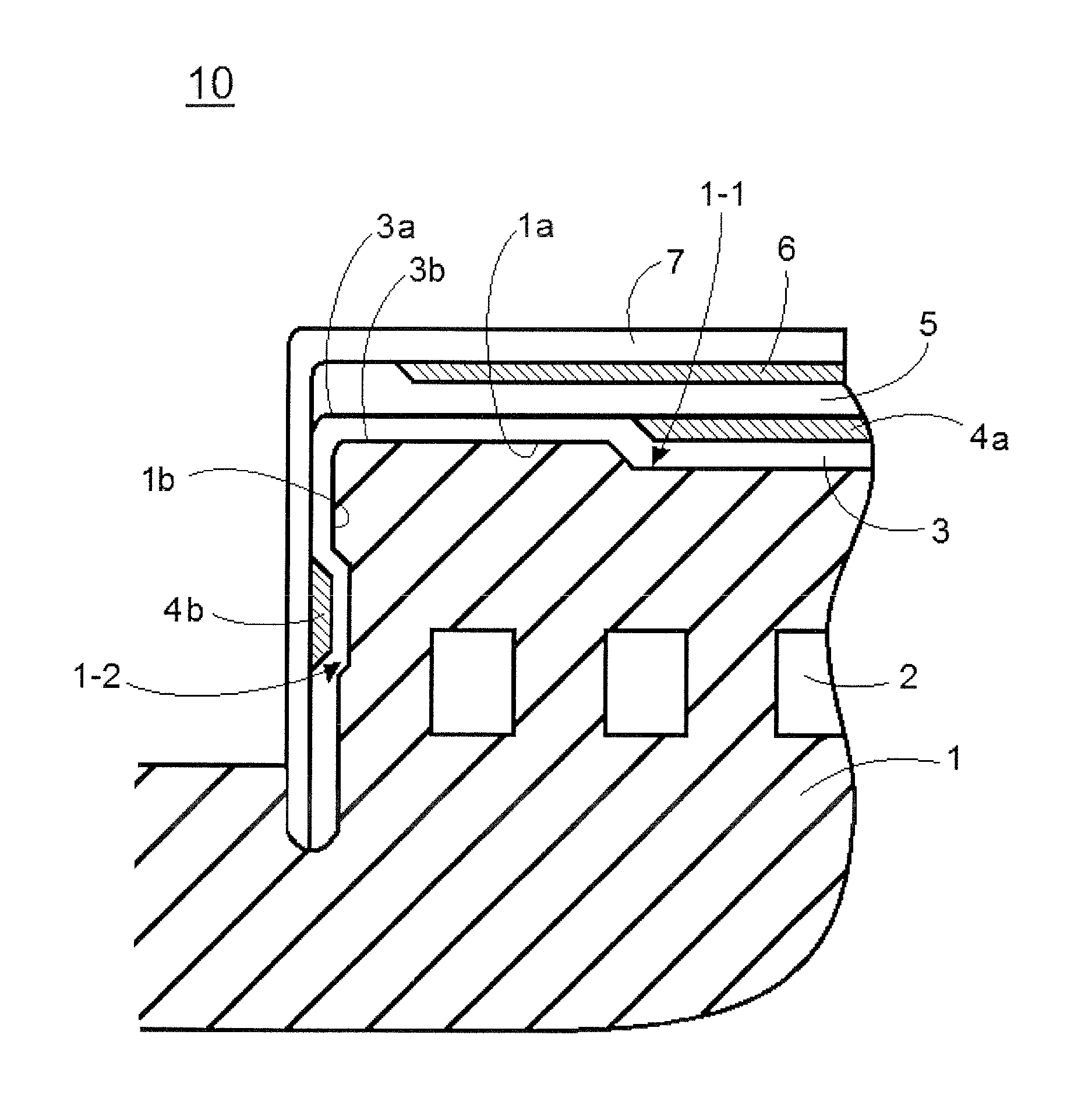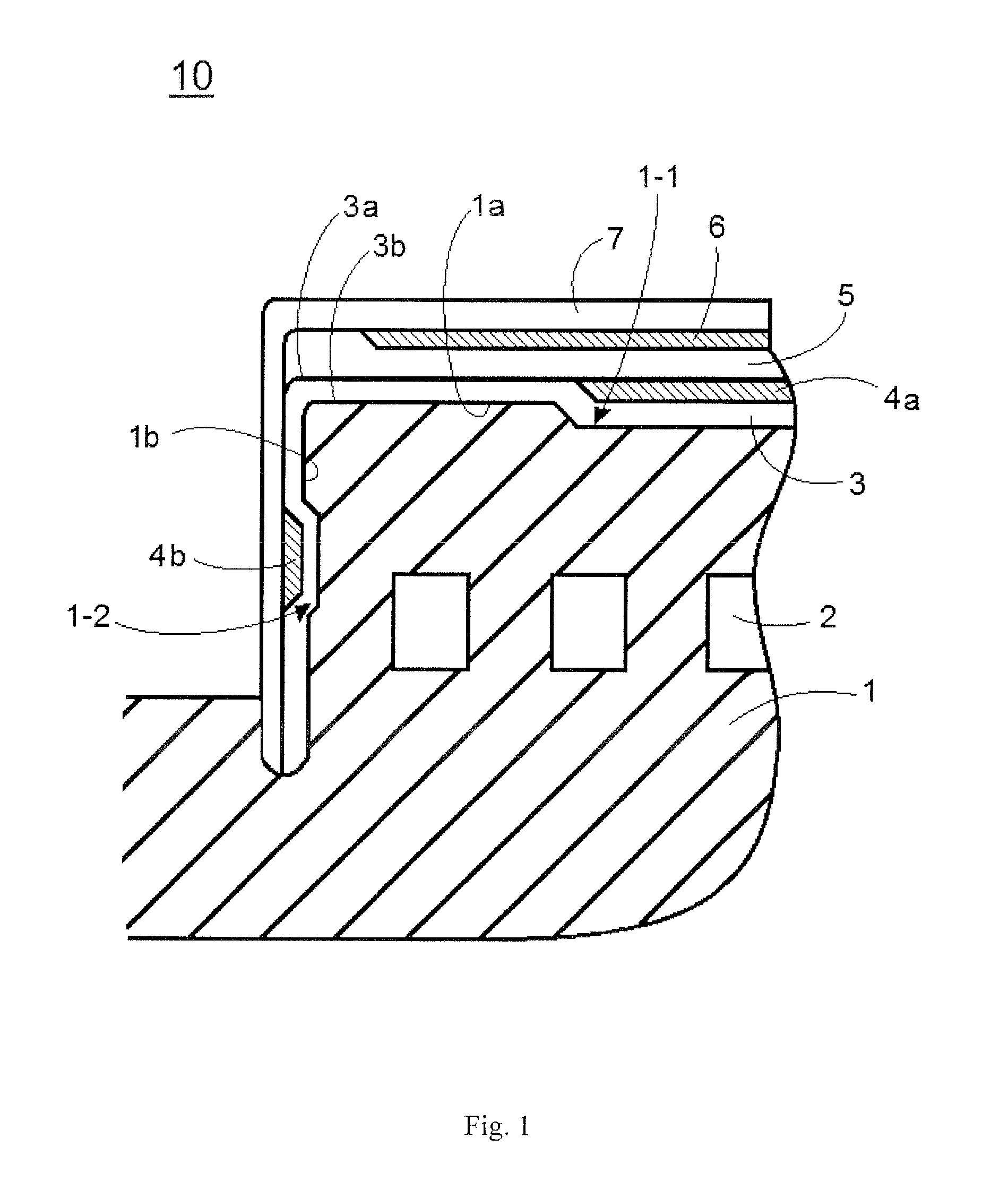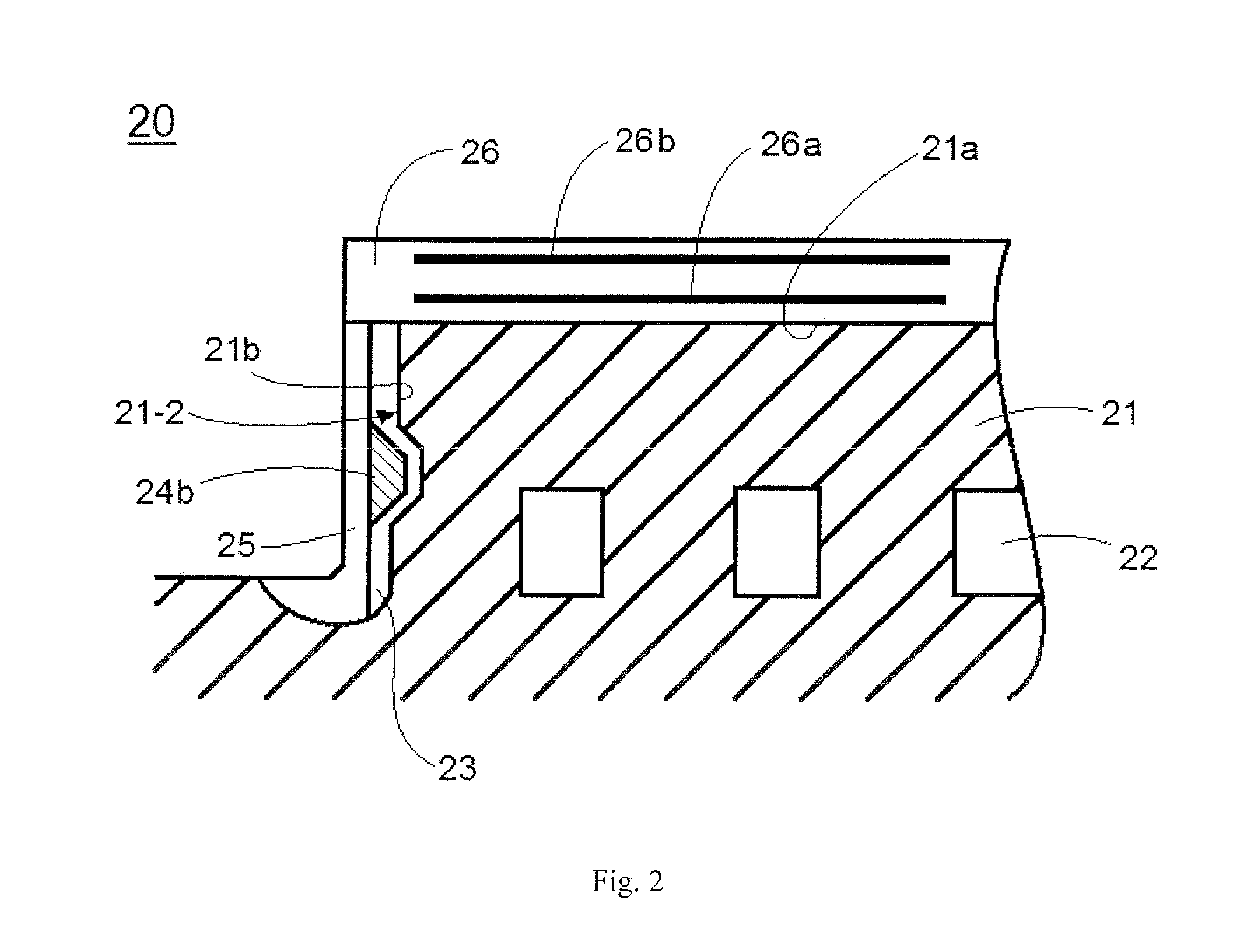Heated electrostatic chuck and semiconductor wafer heater and methods for manufacturing same
a technology of electrostatic chuck and semiconductor wafer, which is applied in the direction of ohmic resistance heating, electrical heating, electrical apparatus, etc., can solve the problems of ineffective mitigating, different heat transfer characteristics of bonding agent, and the inability of bonding agent to hold up well to the severe plasma environment in which these electrostatic chucks are used, etc., to achieve high porosity, reduce thermal mismatch, and reduce the effect of porosity
- Summary
- Abstract
- Description
- Claims
- Application Information
AI Technical Summary
Benefits of technology
Problems solved by technology
Method used
Image
Examples
Embodiment Construction
[0063]FIG. 1 is a cross-sectional view of a semiconductor wafer heated electrostatic chuck (ESC) according to one aspect of the present invention. The heated ESC 10 includes a base 1 having cooling channels 2 (i.e., coolant conduits) provided therein when the base is a metal, for example. The base material can be made of a metal, a ceramic or a composite material such as a ceramic material, including, but not limited to aluminum or alumina, for example. Preferably, the coefficient of thermal expansion coefficient (CTE) of the material comprising the base 1 is in a range of 20 to 30 μm / m° C. at 25° C.-227° C., which corresponds to an operating temperature range of the ESC, and is most preferably around 25.2 μm / m° C. This preferred CTE value corresponds to the CTE of a particular aluminum base used by the Applicant, FM Industries. The preferred CTE range is about ±5 μm / m° C. of the CTE of this base material. If the CTE is outside the preferred range, movement due to thermal expansion ...
PUM
| Property | Measurement | Unit |
|---|---|---|
| Thickness | aaaaa | aaaaa |
| Porosity | aaaaa | aaaaa |
| Coefficient of linear thermal expansion | aaaaa | aaaaa |
Abstract
Description
Claims
Application Information
 Login to View More
Login to View More - R&D
- Intellectual Property
- Life Sciences
- Materials
- Tech Scout
- Unparalleled Data Quality
- Higher Quality Content
- 60% Fewer Hallucinations
Browse by: Latest US Patents, China's latest patents, Technical Efficacy Thesaurus, Application Domain, Technology Topic, Popular Technical Reports.
© 2025 PatSnap. All rights reserved.Legal|Privacy policy|Modern Slavery Act Transparency Statement|Sitemap|About US| Contact US: help@patsnap.com



